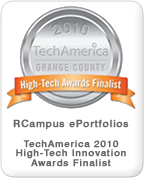Research and Theory
Initially, the SWOT analysis I created for a pretend Argosy Elementary School did a very good job of using the information to find the strengths, weaknesses, opportunities, and threats of the school and indicating why each example was categorized as it was. However, as I have become more aware of research and theory practices at Argosy University, there are some areas of this analysis that I had overlooked previously. I provided examples, but I never include the research to back up certain statements. Hence, I left out the research aspect altogether. The modified version of this analysis includes research to back up previous statements.
|
Strengths
11. The school is accredited by the Southern Association of Colleges and Schools and the Texas Education Agency. “Students who attend a school accredited by NCA CASI or SACS CASI can rest assured that the school is committed to raising student performance and held accountable for improving student learning on a continual basis” (North Central Association Commission on Accreditation and School Improvement, Southern Association of Colleges and Schools Council on Accreditation and School Improvement & National Study of School Evaluation, 2008).
|
Opportunities
1. The school receives Title 1 funds. These funds will allow the school to provide extra academic assistance to those that are failing or at risk for failing to meet the state standards.
2. There will be a full-day kindergarten as opposed to half-day. Research shows that full kindergarten programs “results in increased academic preparedness for first grade” (Long Beach Unified School District, 2000). Those students will receive more instructional time during a school day. This will allow them to cover more material in depth or just more info in general.
3. The school is well equipped with technology: computers, audiovisual equipment, three computers in every classroom, and one computer lab that classes attend twice a week. Students can become knowledgeable of modern technology practices. Teachers can use more advanced hands-on materials for instruction.
|
|
Weaknesses
|
Threats
1. Principals are on a one-year contract, while teachers are on a continuing contract. If schools do not perform well the first year a principal is hired, he may be fired. It takes time to change a school’s performance and atmosphere. The principal may be very good but not have the time to show his abilities. All teachers are not worth keeping, but here they are guaranteed a job regardless. If the teacher is unproductive the students and district will suffer.
2. All campus budgets have been reduced. With schools already performing low, funds are the last thing that needs to be cut. Now is the time for an increase. There will be fewer resources available at a critical time for the schools.
3. Teachers will receive a smaller than average salary increase. The starting teacher salary is now $4,000 less than neighboring districts. At this point the district may lose good teachers that see better benefits in other areas.
|
University of Illinois Board of Trustees. (2008). Helping children succeed in school: Parental involvement in school. Retrieved May 27, 2008, from http://www.urbanext.uiuc.edu/succeed/ol-parental.html
Use the "add document" button to select documents from your Document Center.
